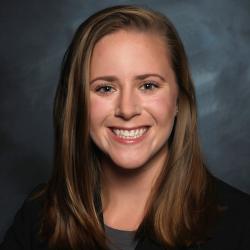About 7 million couples in the US have difficulty getting or staying pregnant. A new biotech is using insights into the biology of male reproductive cells—the sperm that must meet its female equivalent, an egg cell, for fertilization to occur—to develop products meant to make assisted reproductive technologies such as in vitro fertilization (IVF) more effective.
Cambridge, MA-based Ohana (a Hawaiian term meaning “family,” as Salesforce (NYSE: CRM) fans may know) Biosciences debuted publicly on Monday. The company is the latest spinout from venture firm Flagship Pioneering, which founded Ohana in 2016 to explore sperm biology and its impact on the fertility process.
The company recruited Amber Salzman—a former GlaxoSmithKline (NYSE: GSK) executive known for her work in gene therapy, inspired by two nephews and her son’s diagnoses of x-linked adrenoleukodystrophy (ALD), a genetic brain disorder—as its CEO.
While the reproductive health industry has focused on improving egg biology as a path to enhancing fertility, Ohana is focused on the male half of the equation. Sperm used in IVF today is essentially washed and kept alive ahead of fertilization, which happens in a lab ahead of a fertilized egg’s return to the uterus. In natural conception, however, sperm gets assistance from the female reproductive tract on its way to fertilization. Ohana’s experimental product incubates sperm in three separate vials, a method intended to emulate that process.
“When you think of sperm entering the reproductive tract, it has to swim straight and strong across the uterus, then corkscrew-like when it gets in the fallopian tubes, then in another motility pattern to pierce the cumulous cells around the oocyte,” Salzman said. “We treat the sperm so it’s able to do that much more effectively.”
The company is testing its lead program in a randomized control trial in patients at six US fertility centers. Data are anticipated in the third quarter; Ohana plans to submit the product for FDA review through the 510k regulatory approval process. A launch is slated for the end of 2021. Ohana, which launched with about 50 employees, declined to comment on its financial runway.
The company’s research, like those of biotechs in other areas, such as cancer, has been enabled by the relatively recent rise of single-cell sequencing technology. Salzman says Ohana has a propriety database with millions of sperm that that have been single-cell sequenced from both an RNA and DNA perspective. By applying computational biology and machine learning to them, the company has come up with insights that could lead to other fertility applications.
Down the line the company intends to use what it has learned from its database to develop a way to select the best-quality sperm cells for use in IVF, Salzman added.
“Not all sperm are created equal, and what we’ve really become the expert in is learning what’s different between the sperm, and understanding how the different characteristics could lead to a different health outcome,” she said. “We’re not changing the sperm at all, we’re just helping to select the ones that are less likely to cause a problem, and that’s where we have had proof of biology internally and we’re advancing that.”
Salzman says Ohana’s mission feels personal to her: Wanting to conceive a second time but knowing she could again pass along ALD, she turned to IVF.
“Even though I was fertile, I could do IVF and then each of the embryos could be tested to see if they were affected, and only the unaffected embryos would be transferred so that way I could have a healthy child,” she said in an interview. ‘It sounded really easy, but not so: It was grueling.”
The procedure—which involves multiple medications, including daily hormone injections, surgical removal of eggs, and, after combining them with sperm in a lab, implantation in a female patient or gestational carrier—costs about $15,000 per cycle. Success rates vary, and patients typically undergo multiple cycles.
Salzman underwent five.
“Fortunately, financially we could manage it, but physically, emotionally…I have a wonderful teenage daughter now as a result of this process, who is phenomenal and I really owe to assisted reproductive technology, but it’s grueling,” she said. “At the time, almost 20 years ago I thought, it’s just me, not that many people are faced with this dilemma of carrying a rare disease and it’s just not a common problem. … It turns out that 7 million couples are faced with the struggle of infertility and are trying to use assisted reproductive technology, and it hasn’t gotten any better from the time I did it.”
The company is also working on a new birth control option: a non-hormonal injection for men that would be given every three months. Salzam says the same research that led it to its lead program prompted work on the experimental contraceptive, which is intended to inhibit sperm from being able to fertilize an egg. The biotech says it plans to start work this year to ready that product to begin human testing in 2021.
Flagship has launched a handful of companies out of its biotech startup incubator in recent months, including Cellarity, Ring Therapeutics, and Omega Therapeutics.

